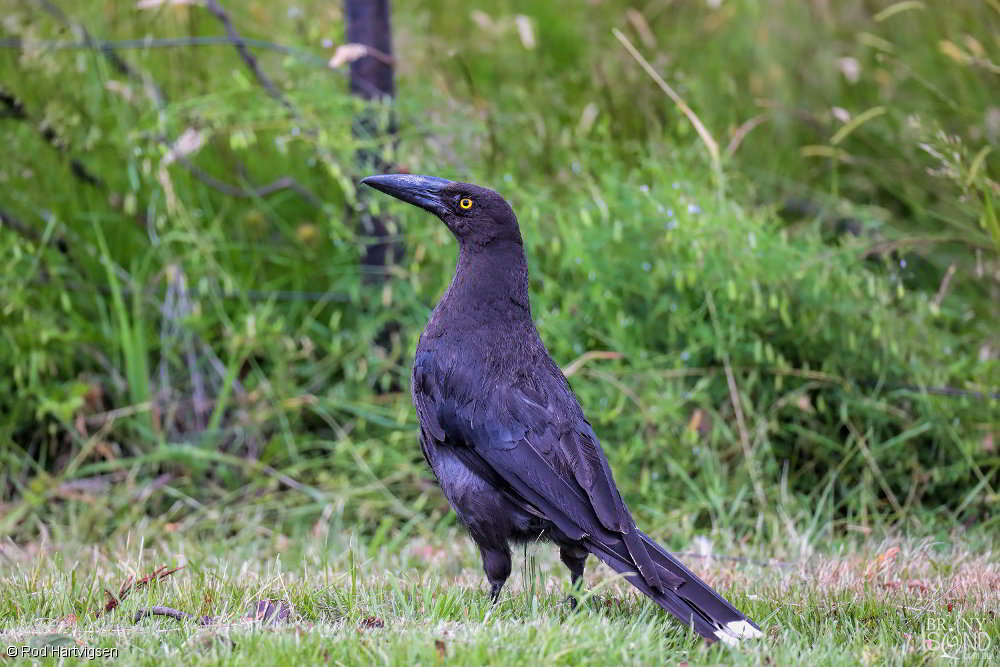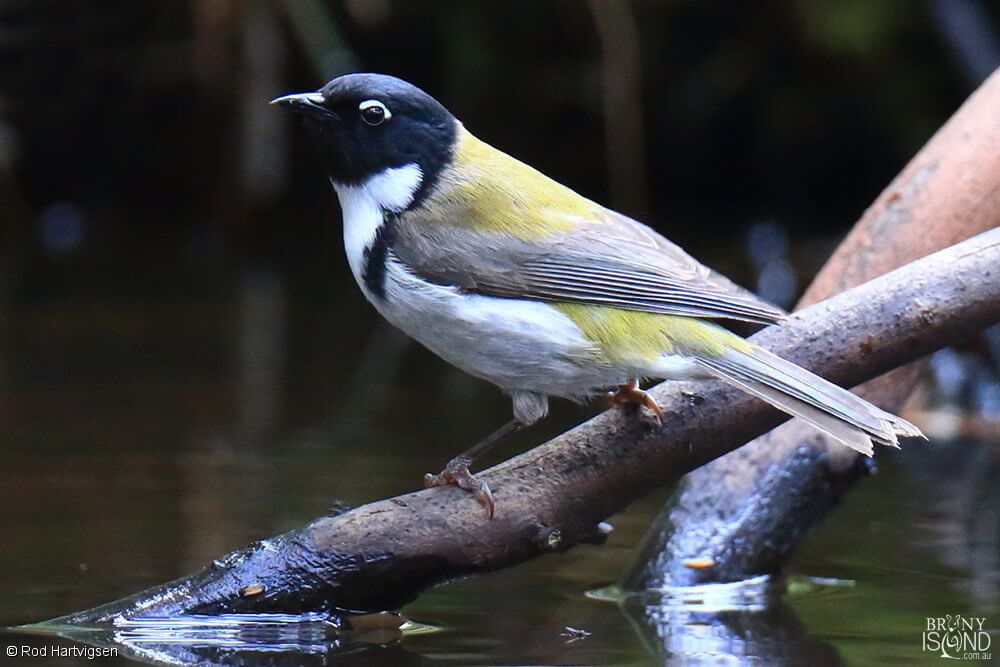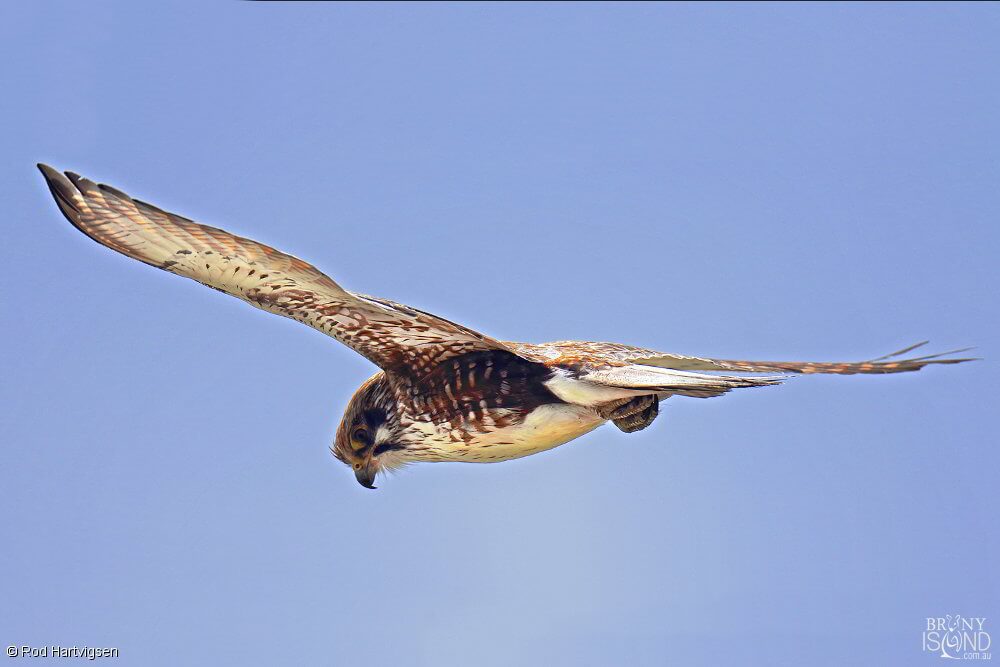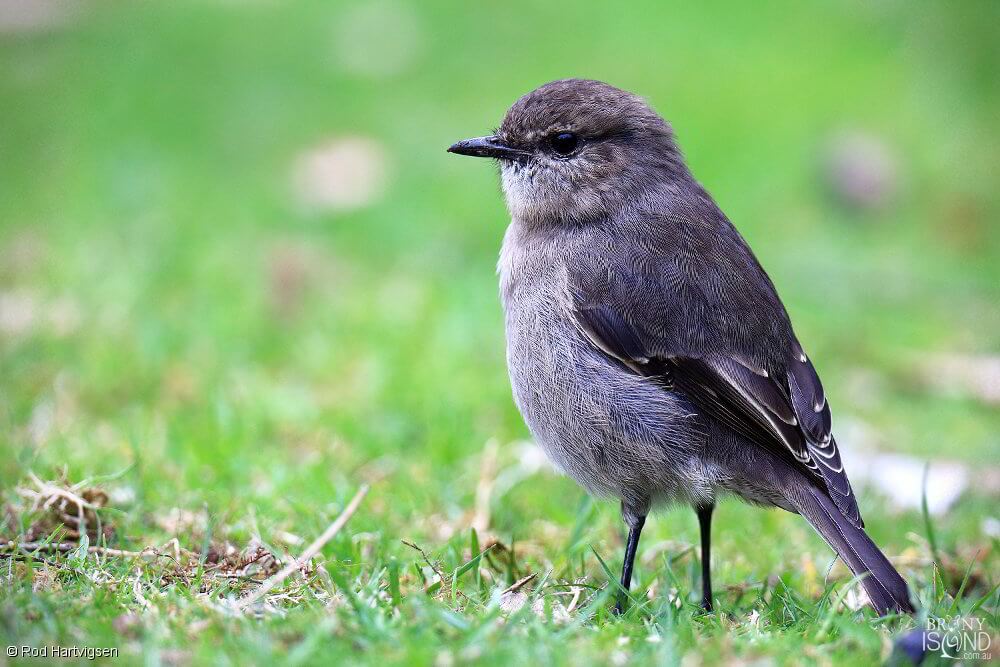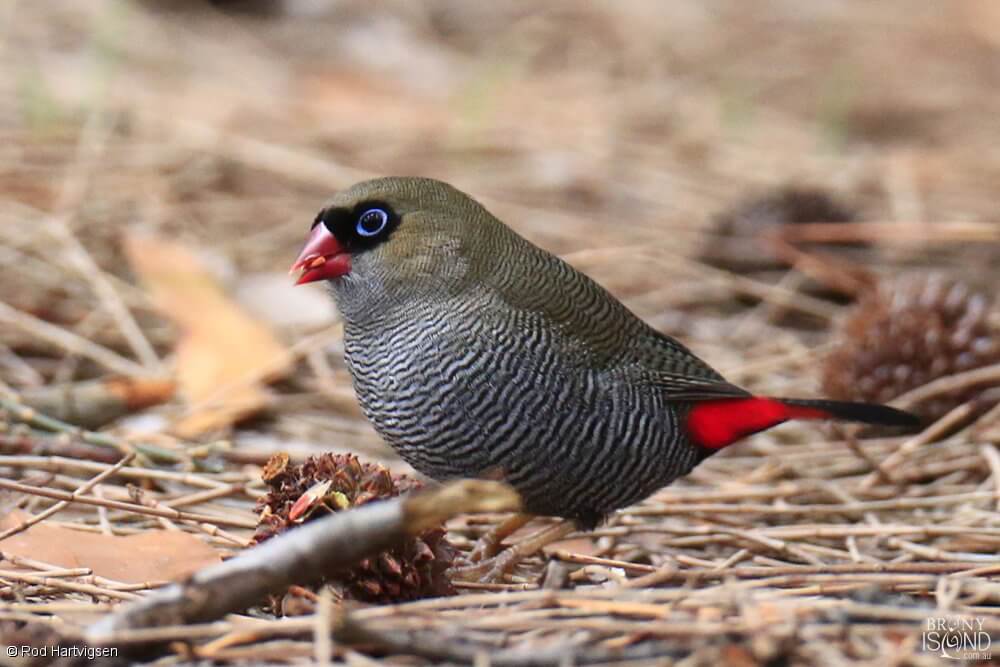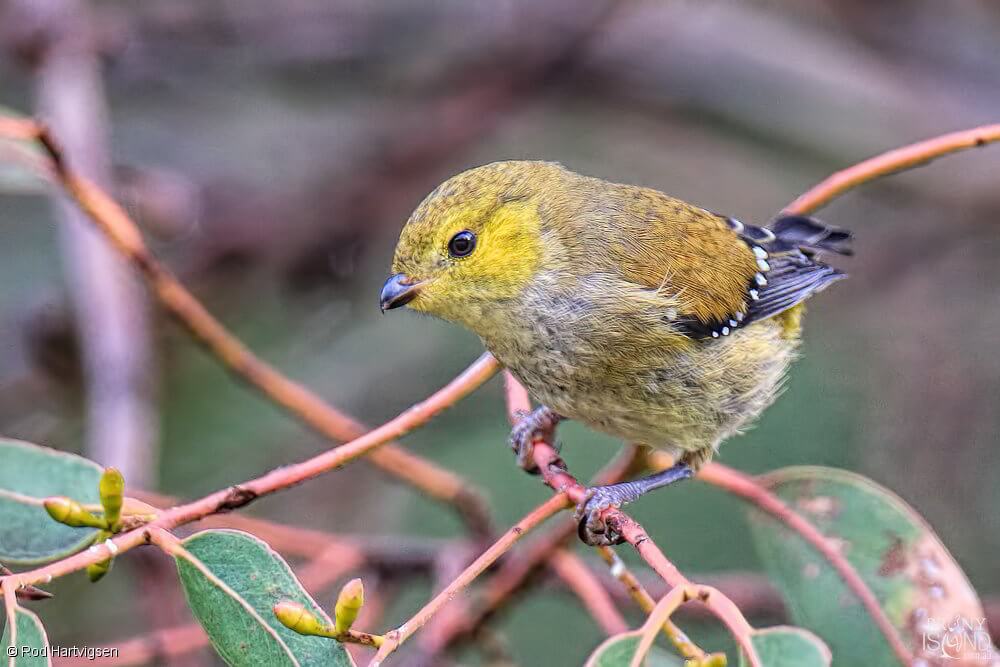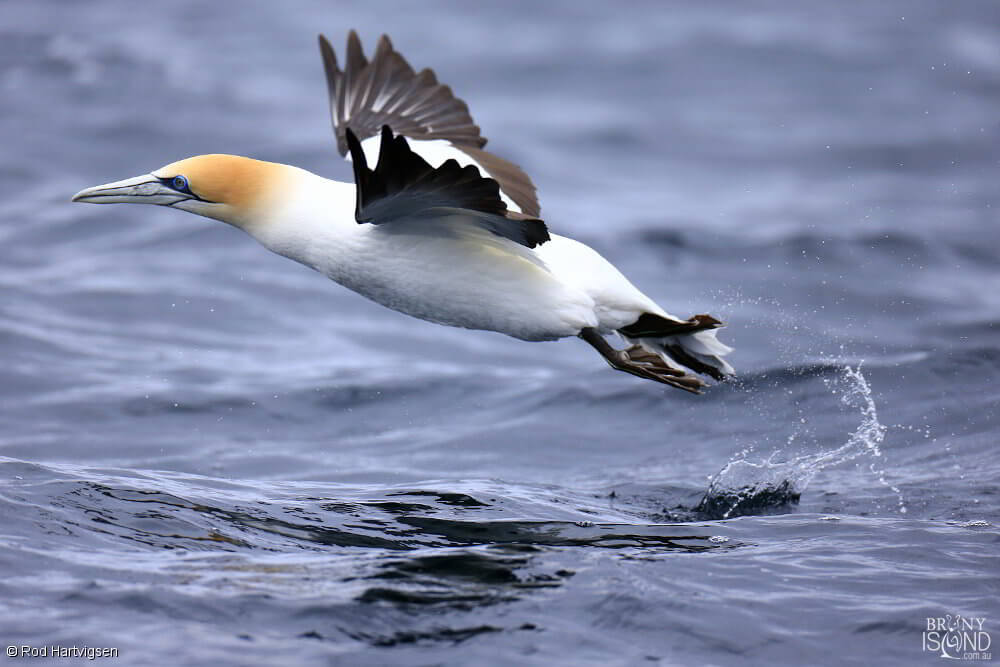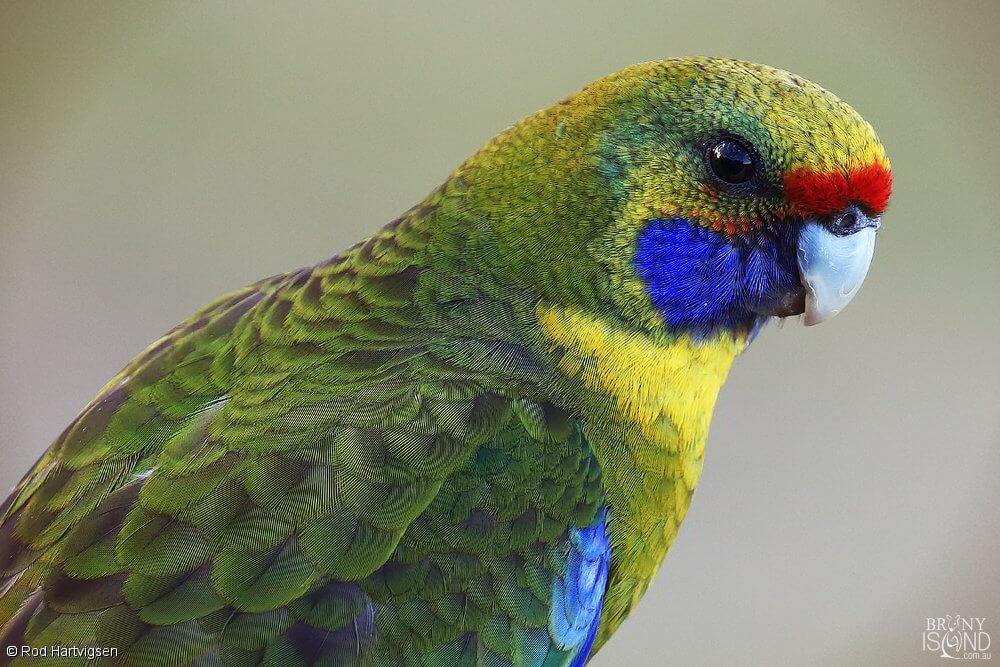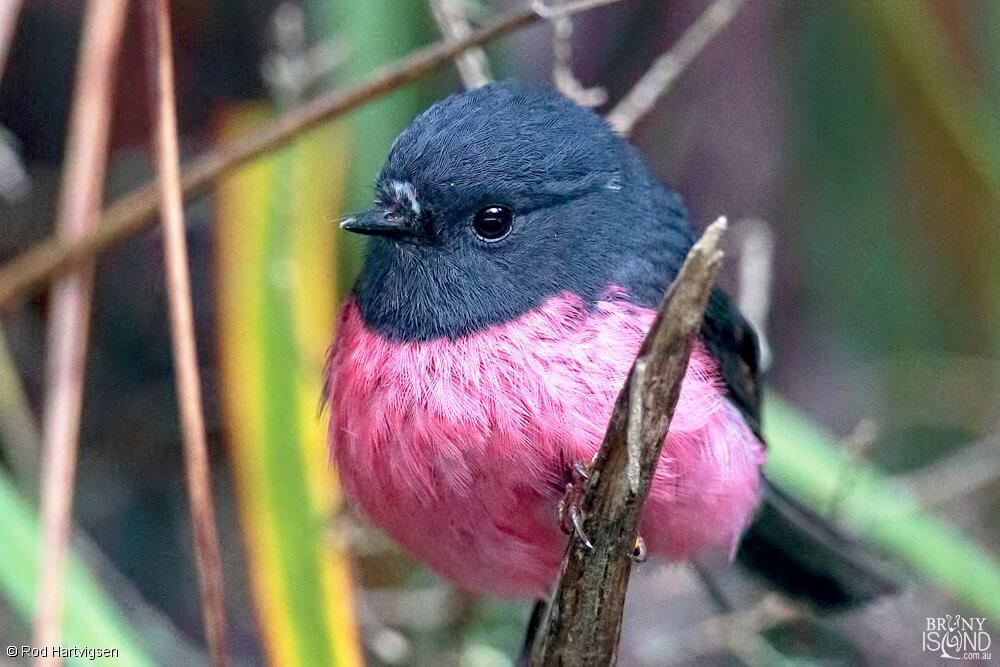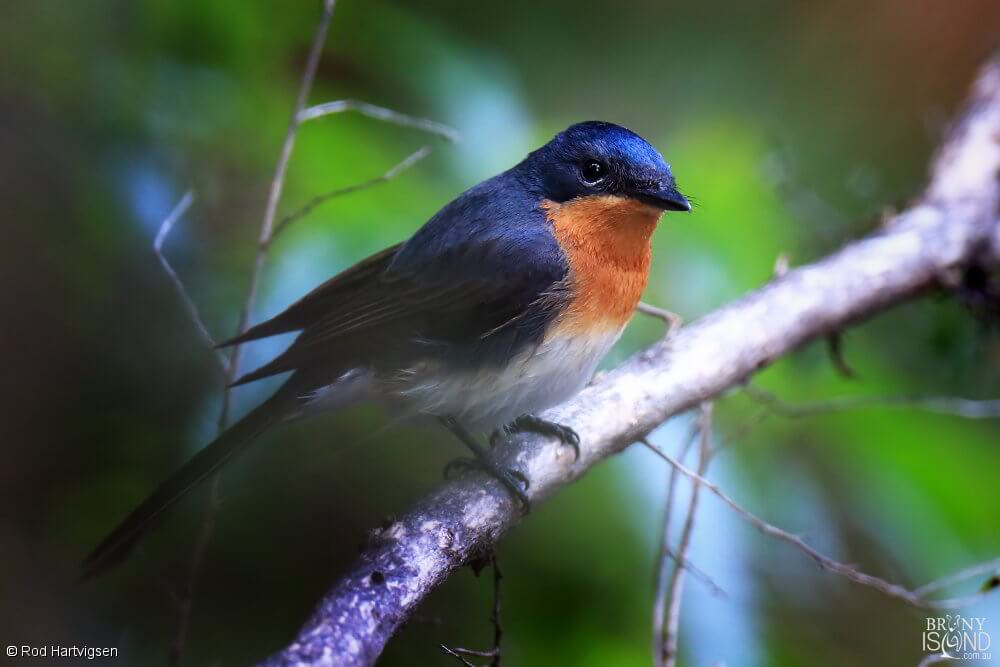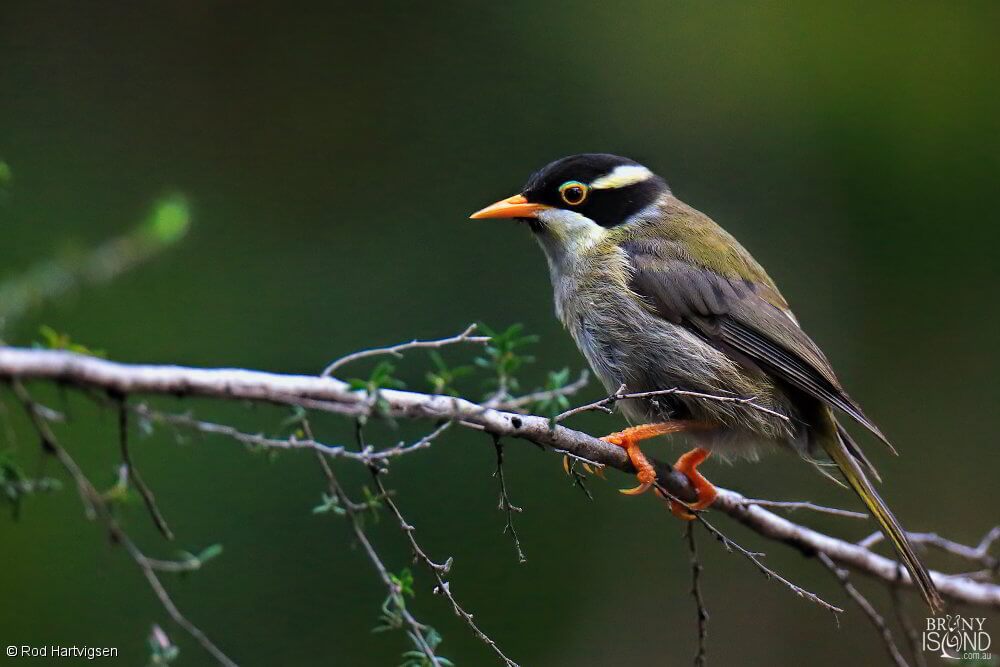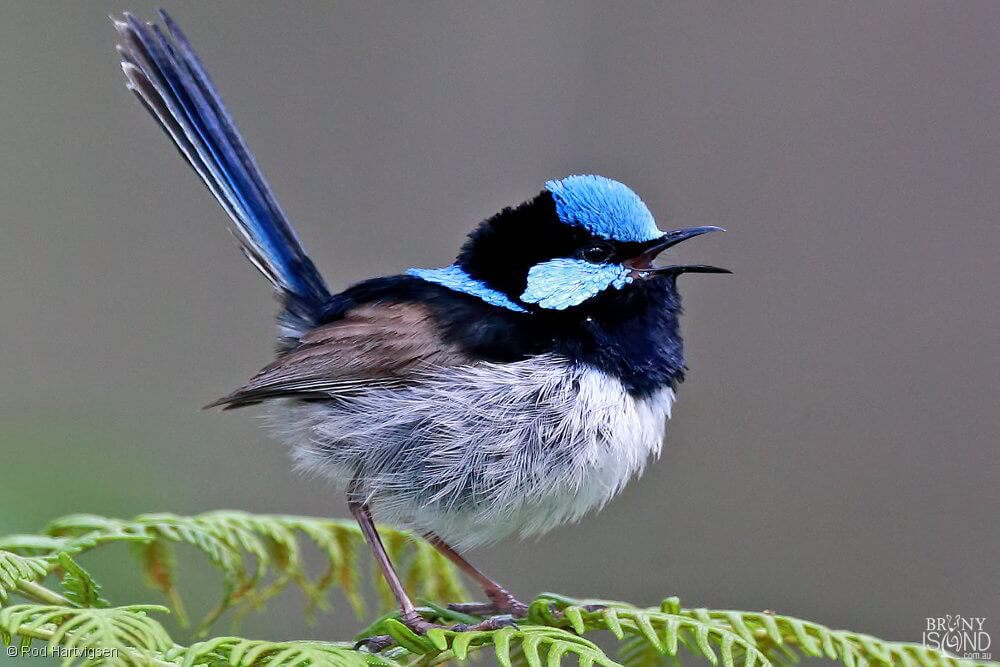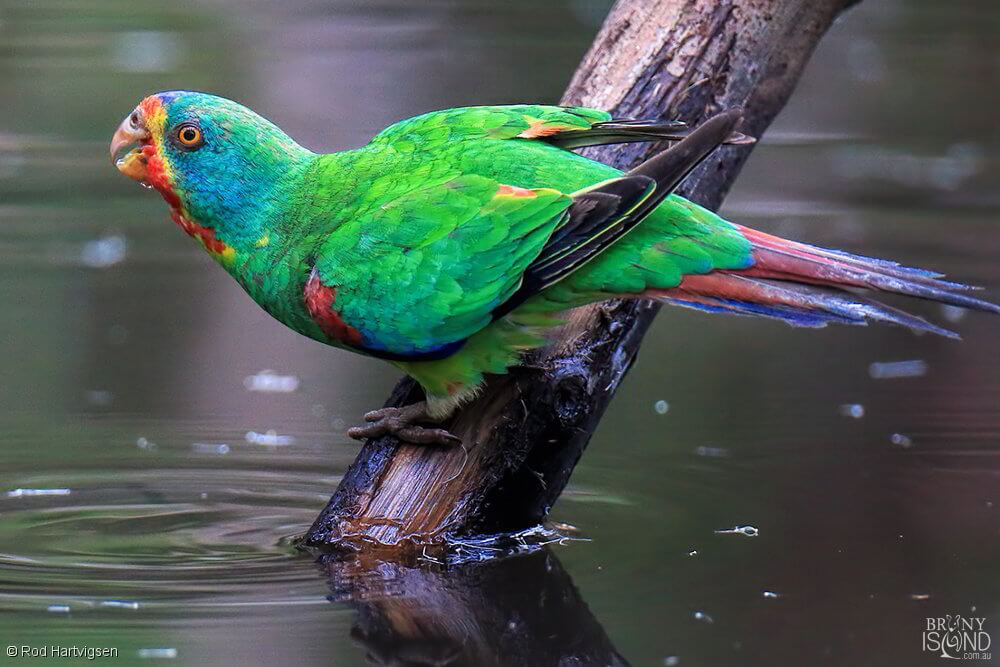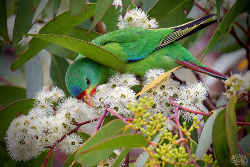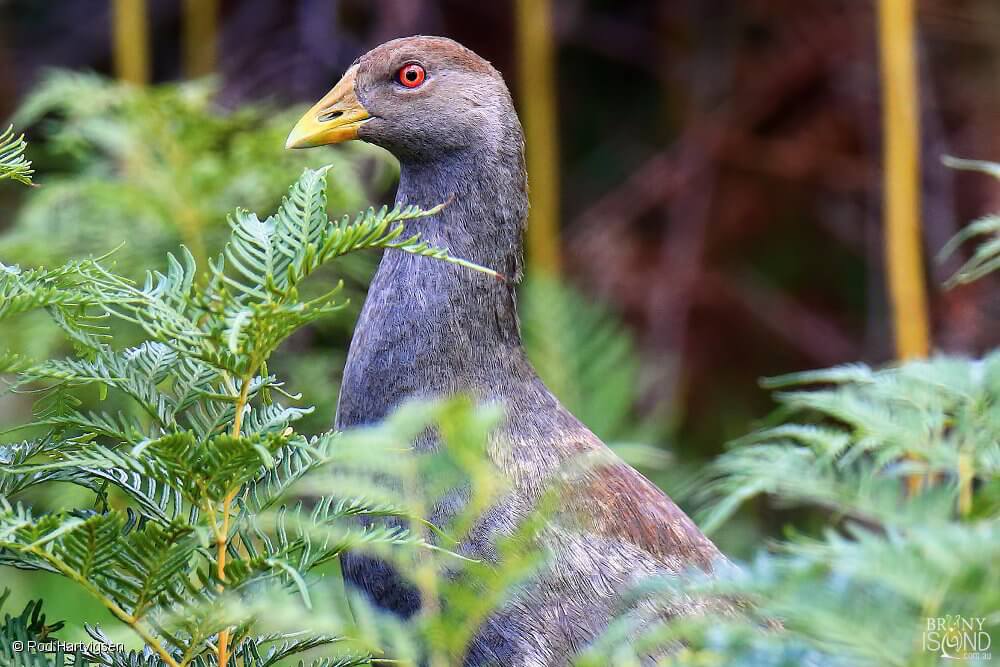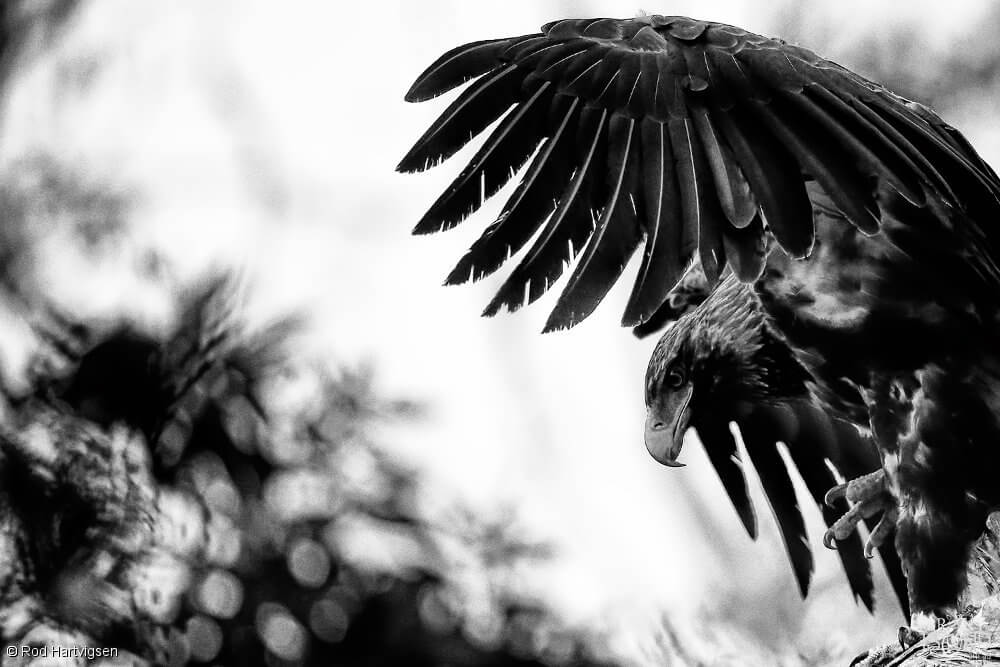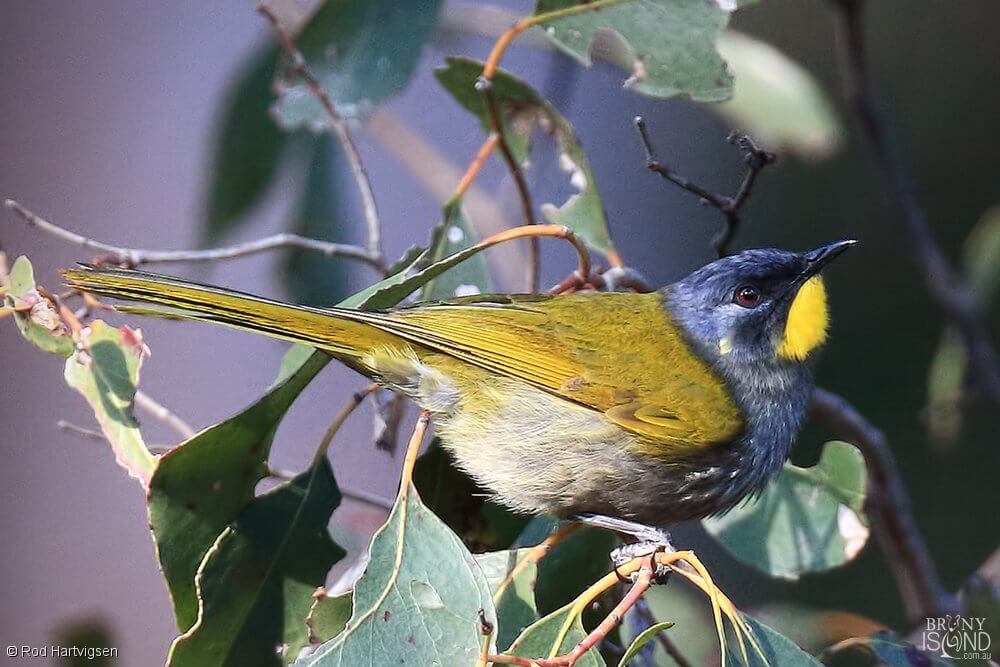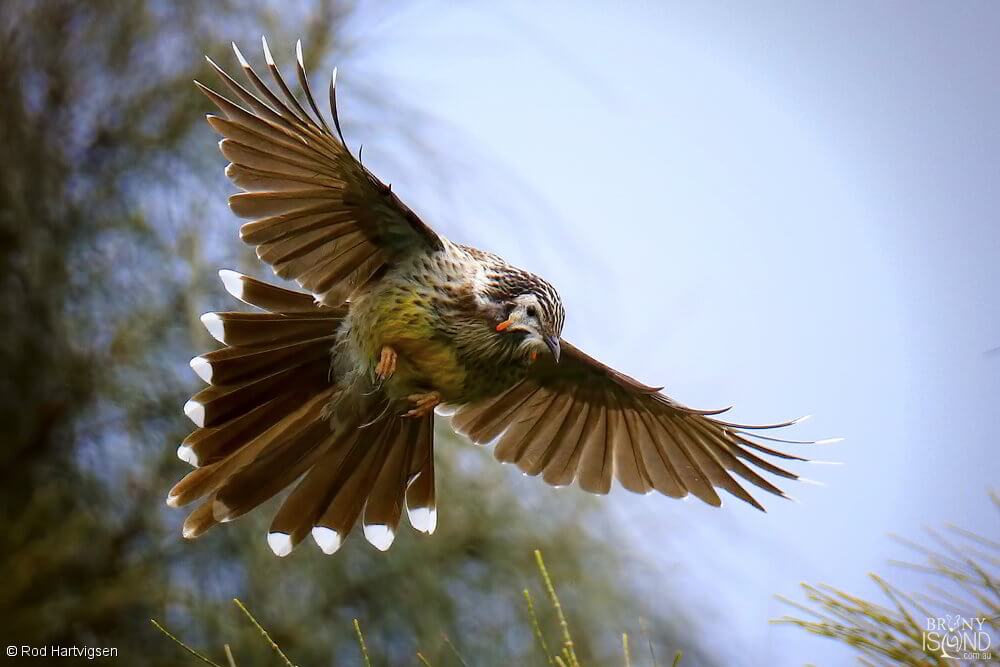Bruny Island Birdlife
Bruny Island is home to abundant birdlife, including all 12 species endemic to Tasmania. Some are critically endangered, such as the Forty-spotted Pardalote, the Swift Parrot, and the Tasmanian Wedge-tailed Eagle. All 12 endemic species are protected under Tasmania's Nature Conservation Act 2002.
Bruny Island is a popular place for bird watching, and has been named in the top 10 bird watching sites in Australia by Australian Birdlife magazine.
Watch out for the next Bruny Island Bird Festival, (date TBA).
Photos from award winning photographer Rod Hartvigsen
Albatross
There are 21 species of albatross, although only 10 are commonly seen over Tasmanian waters. Albatross are quite large birds with big wingspan which helps them fly long distances. Albatross are long lived birds and can live up to 50 years.
Behaviour
Albatross cover great distances looking for food, and can cover almost a thousand kilometres in a single day, using dynamic soaring and slope soaring techniques, which means they don't even need to flap their wings.
Habitat
Albatross usually create colonies on isolated islands. There are 3 breeding islands off Tasmania - Mewstone and Pedra Branca to the south of Tasmania, and Albatross Island to the north. Albatross can often be seen around the Cape Bruny Lighthouse area.
Conservation
Albatross in the past were hunted for food, their bones and feathers, and for sport. Modern threats include drowning after getting hooked on fishing longlines, rats and feral cats eating the young, and ingestion of plastic wastes. Three of the 21 species are critically endangered and the others are considered threatened. In 2001, an international treaty was signed requiring countries to implement measures to try and halt the rapid decline of the albatross population.
Black Currawong
The Black Currawong (Strepera fuliginosa) is a bird endemic to Tasmania. It is a medium size bird that can grow up to 50cm long.
Habitat
The Black Currawong prefers wet eucalypt forests and rainforests in the highlands. It makes its nest high up in trees.
Behaviour
The Black Currawong is an omnivore, feeding on young birds, lizards, worms, insects and berries. It can be quite bold and has been known to snatch food from people.
Conservation
The Black Currawong is not endangered.
Black-headed Honeyeater
The Black-headed Honeyeater (Melithreptus affinis) is a small bird endemic to Tasmania that grows up to 15cm long.
Habitat
The Black-headed Honeyeater is widespread in Tasmania and can be found in forests, coastal heaths and sometimes in urban areas.
Behaviour
The Black-headed Honeyeater stays high up in trees and is rarely seen on the ground. It feeds on insects and nectar and sometimes can be seen hanging upside down while foraging. It is a sociable bird, often seen foraging with other species of birds, and nests with other honeyeaters in loose colonies.
Conservation
The Black-headed Honeyeater is not endangered.
Brown Falcon
The Brown Falcon (Falco berigora) is a bird of prey that can found throughout Australia. It can grow up to 50cm long.
Habitat
The Brown Falcon prefers open grasslands and agricultural areas, where it is easier to spot its prey.
Behaviour
Brown Falcons are solitary birds. They are often seen perched high up, on the lookout for prey. They feed on small mammals, reptiles and insects. The falcon has specialized teeth in its beak which it uses to sever the spine of its prey.
Conservation
The Brown Falcon is not endangered.
Crescent Honeyeater
The Crescent Honeyeater (Phylidonyris pyrrhopterus) is a bird found commonly in south eastern Australia. It can grow to 17cm in length. It can be distinguished by the black crescent shapes under its neck.
Habitat
The Crescent Honeyeater prefers forests and places with dense vegetation, but can be sometimes spotted in parks and gardens.
Behaviour
The Crescent Honeyeater lives on a diet of insects and nectar. It nests relatively low down, concealing their nests in the middle of shrubs. This makes them more vulnerable to ground dwelling predators.
Conservation
The Crescent Honeyeater is not endangered.
Dusky Robin
The Dusky Robin (Melanodryas vittata) is a small olive-brown bird endemic to Tasmania. It was given the nickname of 'stump robin' by early settlers, as it often sits on stumps or posts while it looks for insects and worms.
Habitat
The Dusky Robin prefers dry forests and the edge zones between forests and clearings.
Behaviour
The Dusky Robin feeds on insects and nectar, and feeds both on the ground and in trees. It nests in tree cavities and tree forks.
Conservation
The Dusky Robin is not endangered.
Firetail
The Beautiful Firetail (Stagonopleura bella), also known as the Firetail Finch, is aptly named, with its bright red tail and beak making it easy to distinguish.
Habitat
The Beautiful Firetail is found in south-eastern Australia but is more common in Tasmania. It lives in coastal forests and shrub lands and prefers to stay close to water.
Behaviour
The Beautiful Firetail mainly eats seeds but does supplement this with insects and snails. It is often found in pairs or in small flocks. When breeding the firetail couple create a bottle shaped nest which can be entered via a tunnel.
Conservation
The Beautiful Firetail is not endangered. However they are vulnerable to predators such as the feral cat and quoll.
Forty-spotted Pardalote
The Forty-spotted Pardalote (Pardalotus quadragintus) is one of Australia's rarest birds and can now only be found in south eastern Tasmania, including Bruny Island. The bird's name comes from the white spots that appear on its wings.
Habitat
The Forty-spotted Pardalote lives in dry eucalypt forests with white gums. The bird relies exclusively on the white gum trees for nesting and feeding.
Behaviour
The Forty-spotted Pardalote feeds on insects and manna of the white gum. They only nest in the white gum tree.
Conservation
The Forty-spotted Pardalote is under threat of extinction. The reasons for their rapid decline include clearing of land and white gums, competition from more aggressive birds for hollows in trees for breeding, and parasitic flies causing nestling mortality. In 1991, plans were made for protecting the species and helping it recover. A private landowner donated a 100ha property at Dennes Hill to be a nature reserve for the birds. Other landowners on Bruny Island have planted white gums on their properties. Nesting boxes have also been placed in trees.
Gannet
The Australasian Gannet (Morus serrator) is a large seabird found in coastal areas around Australia and New Zealand. They grow up to 95cm long
Habitat
Gannets are sea birds, spending most of their time at sea except when breeding. There are several breeding colonies on isolated islands off Tasmania. Gannets in flight can sometimes be seen while taking the Bruny Island ferry.
Behaviour
Gannets are expert fishers and plunge dive into water from great heights, reaching speeds up to 100km/h, to catch fish or squid.
Conservation
The gannet is not an endangered species.
Green rosella
The Green Rosella (Platycercus caledonicus) is a bird endemic to Tasmania. The brightly coloured bird is a common sight on Bruny Island. It is Australia's largest rosella and grows up to 36cm in length.
Habitat
The Green Rosella lives in most habitats except treeless areas like cleared farmland.
Behaviour
The Green Rosella's diet consists mainly of seeds, but also eats fruits, berries, nectar and insects. They feed on the ground and in trees. When breeding the bird nests in tree hollows.
Conservation
The Green Rosella is not an endangered species.
Pink Robin
The Pink Robin (Petroica rodinogaster) is a small bird found in south eastern Australia. It has a beautiful bright pink breast which contrasts with the sooty black coloured head and wings.
Habitat
Pink Robins live in rainforests and moist eucalypt forests.
Behaviour
The Pink Robin feeds on insects and spiders, often at ground level.
Conservation
The Pink Robin is not an endangered species although it is considered vulnerable in NSW.
Red-capped Plover
The Red-capped Plover (Charadrius ruficapillus) is found throughout Australia and is often seen on beaches.
Habitat
The Red-capped Plover lives in coastal and wetland areas.
Behaviour
The Red-capped Plover feeds on worms, molluscs and crustaceans. It can often be seen foraging for food on beaches and wetland areas. When breeding they create nests on the ground.
Conservation
The Red-capped Plover is not an endangered species.
Satin Flycatcher
The Satin Flycatcher (Myiagra cyanoleuca) is a small and very active bird that can be found on the east coast of Australia and also Indonesia and New Guinea.
Habitat
Satin Flycatchers live in dense forest areas, preferring temperate to tropical forests but not rainforests.
Behaviour
Satin Flycatchers are migratory birds, moving north for the winter, and returning south in spring to breed. They feed primarily on insects.
Conservation
The Satin Flycatcher is not endangered.
Sooty Oystercatcher
The Sooty Oystercatcher (Haematopus fuliginosus) is a bird found all around the coasts of Australia. It grows up to 52cm in length.
Habitat
The Sooty Oystercatcher lives only in coastal areas.
Behaviour
The Sooty Oystercatcher eats coastal marine life such as crustaceans, molluscs, marine worms and shellfish. It uses its long bill to prise open food, and to break open shells against rocks. When breeding it nests on rocky beaches and outcrops.
Conservation
The Sooty Oystercatcher is considered vulnerable in NSW and programs are in place to help protect the species from habitat destruction and predation from foxes, dogs, cats, rats and raptors.
Strong-billed Honeyeater
The Strong-billed Honeyeater (Melithreptus validirostris) is endemic to Tasmania. It is of similar size to the black-headed honey eater. It can be distinguished from the black-headed honeyeater by the white throat and chest, and dark beak.
Habitat
The Strong-billed Honeyeater prefers wet forests, wet scrub and heath. It is sometimes seen in urban parks and gardens.
Behaviour
The Strong-billed Honeyeater lives primarily on a diet of insects, although it will occasionally eat nectar and fruit. It feeds a tree level and ground level. Strong-billed Honeyeaters set up breeding colonies during the breeding season, which they return to every year. The breeding colony is a community effort with all adults helping the the nest building, feed and defence.
Conservation
The Strong-billed Honeyeater is not endangered.
Superb Fairy-wren
The Superb Fairy-wren (Malurus cyaneus) is a bird found commonly in eastern and south eastern Australia. The adult male of the species has bright blue colours, while the females and young have duller grey and brown colours.
Habitat
The Superb Fairy-wren lives in areas where there is some trees, shrubs or undergrowth. It can be often seen in urban areas.
Behaviour
The Superb Fairy-wren lives primarily on a diet of insects but also supplements this with seeds. It is a very active bird, often in motion. During mating season, the male will court the female by presenting yellow petals. Superb fairy-wrens will mate with multiple partners, resulting in the tag of "least faithful bird in the world".
Conservation
The Superb Fairy-wren is not endangered.
Swift Parrot
The brightly coloured Swift Parrot (Lathamus discolor) can be found in south eastern Australia, but only breeds in Tasmania. It grows up to 25cm long. This bird species is critically endangered.
Habitat
The Swift Parrot lives in forests and woodlands, and sometimes urban parks and gardens.
Behaviour
The Swift Parrot spends most of its time in trees. It feeds on the nectar of flowering eucalypts, seeds and flowers. They can be often seen hanging upside down while feeding. The Swift Parrot migrates to Tasmania for breeding season in September. The Swift Parrot requires a nesting habitat (usually a tree hollow) near flowering Tasmania blue gums and black gums, as this is their primary food source.
Conservation
The Swift Parrot is critically endangered, with an estimated population of 2000. Logging has resulted in a loss of their nesting habitat. Measures to restore the population include the installation of nesting boxes and artificial tree hollows, a moratorium on logging on Bruny Island and installation of barriers to discourage illegal logging.
Tasmanian Native-hen
The Tasmanian Native-hen (Tribonyx mortierii) is a flightless bird endemic to Tasmania. It can grow up to 50cm tall.
Habitat
The Tasmanian Native-hen lives in open areas near water such as grasslands and marshes.
Behaviour
The Tasmanian Native-hen feeds on seeds, grasses, leaves and occasionally insects. Although it cannot fly, it is a capable swimmer and a fast runner, able to reach speeds near 50km/h. The bird is territorial and fights can occur in defence of territory.
Conservation
The Tasmanian Native-hen is not endangered. However, being a flightless bird with nests on the ground, they are vulnerable to predators such as feral cats and foxes. The hen is a protected species under Tasmanian law.
Tasmanian Scrubwren
The Tasmanian Scrubwren (Sericornis humilis) is a small bird endemic to Tasmania. It grows up to 13cm long.
Habitat
The Tasmanian Scrubwren prefers wet and dense forests.
Behaviour
The Tasmanian Scrubwren is primarily an insectivore but occasionally eats seeds. It creates dome shaped nests.
Conservation
The Tasmanian Scrubwren is not endangered.
Tasmanian Thornbill
The Tasmanian Thornbill (Acanthiza ewingii) is a small bird endemic to Tasmania. It grows up to 10cm long.
Habitat
The Tasmanian Thornbill prefers the colder climate of rainforests and wet forests.
Behaviour
The Tasmanian Thornbill eats mainly insects and occasionally seeds. It can be seen foraging at tree and ground level. When nesting, it creates a dome shaped nest with a flap door.
Conservation
The Tasmanian Thornbill is not endangered.
Wedge-tailed Eagle
The Tasmanian Wedge-tailed Eagle (Aquila audax fleayi) is a large bird of prey and can grow over 1m in height and wingspan up to 2.3m
Habitat
The Tasmanian Wedge-tailed Eagle prefers forested land and open plains. They can sometimes be seen perched in trees or on poles, giving them a good view of potential prey.
Behaviour
The Tasmanian Wedge-tailed Eagle is a territorial bird. It mates for life and the pair will build several nests in their territory. Wedge-tailed eagles eat both live prey such as rabbits, birds and wallables, and carrion. Immature birds are more likely to feed on carrion.
Conservation
The Tasmanian Wedge-tailed Eagle is critically endangered. It is estimated there are less than 300 breeding pairs left in Tasmania. The threats to the wedge-tailed eagle include loss of habitat, nest disturbance, electrocution, collision with man-made objects and hunting by man. Wedge-tailed eagles are particularly sensitive to nest disturbance and will not breed if there is visible or audible disturbance, and may abandon a nest entirely. In the past, a bounty was paid to farmers to kill the eagles as they were regarded as a pest that attacked livestock. Now the eagle is protected by federal and state law, but there are still cases of illegal shooting. Conservation efforts have included education programs to prevent nest disturbance, mapping and protection of nesting sites, and installation of bird perches and electrical insulation on powerlines.
Yellow-throated Honeyeater
The Yellow-throated Honeyeater (Lichenostomus flavicollis) is found only in Tasmania. It is easily distinguished by the yellow coloured throat, wings and tail. It grows up to 21cm long.
Habitat
The Yellow-throated Honeyeater lives in dry and wet forests and coastal heaths. They can also be sometimes spotted in fruit orchards and urban parks and gardens.
Behaviour
The Yellow-throated Honeyeater is a territorial bird, defending its territory from birds of the same and different species. It feeds primarily on insects and nectar, and occasionally fruit and seeds.
Conservation
The Yellow-throated Honeyeater is not endangered.
Yellow Wattlebird
The Yellow Wattlebird (Anthochaera paradoxa) is endemic to Tasmania. It is named for the orange-yellow wattles hanging from its face and yellow coloured belly. It is a medium size bird, growing up to 45cm long.
Habitat
The Yellow Wattlebird lives in wet and dry forests, wooded areas, coastal heaths and can sometimes be seen in open urban areas.
Behaviour
The Yellow Wattlebird is a territorial bird. It primarily eats the nectar of eucalypts and banksia trees but also eats fruit, insects, spiders and manna.
Conservation
The Yellow Wattlebird is not endangered.
Tasmanian Azure Kingfisher
Tasmanian Azure Kingfisher
The Tasmanian Azure Kingfisher (Ceyx azureus subsp. diemenensis) is a small brightly coloured bird found only in Tasmania.
Habitat
The Tasmanian Azure Kingfisher is found in shady and overhanging forest vegetation along the forested margins of major rivers on the south, west, north and northwest coasts, with other occurrences in the northeast, east, centre and Bass Strait islands. This photo is believed to be one of the first taken of the Tasmanian Azure Kingfisher on Bruny Island.
Behaviour
The Tasmanian Azure Kingfisher catches prey by plunging from perches overhanging the water. It feeds on small fish, freshwater crayfish, aquatic insects, and occasionally frogs. The number of birds is thought to be fewer than 250 mature individuals. The main threat to the Tasmanian Azure Kingfisher is clearing and modification of river-side vegetation.
Conservation
The Tasmanian Azure Kingfisher is endangered.

